Brushing teeth with children
Brushing teeth with children
Brush the teeth of children up to 10 years old
Usually, children want to brush their teeth themselves at a very young age. That's fine. Please encourage that. But they don't clean equally well everywhere yet. That's why help is needed! Brushing your teeth properly does not happen automatically, a child has to learn that. The information applies to children up to and including 12 years of age.
Brushing… and brushing again
Children up to about 10 years of age do not clean their teeth very well yet. Therefore, brush the teeth in children up to that age at least once a day, even if your child uses an electric brush. By brushing afterwards you also make it clear how important this daily care is. This is how brushing your teeth becomes a good habit. Even after the 10th year, it remains important to guide and monitor teeth brushing.
Brush for 2 minutes twice a day
It is important for everyone, including (small) children, to brush their teeth for 2 minutes twice a day. Brush in the morning after breakfast and at night before bed. Brush small children in the morning and evening (after). Let your child brush his teeth himself, of course he has to learn it! For example, let children brush alone in the morning when they are ready. In any case, brush at night. From the age of 10, most children can brush independently, but supervision whether and how this is done remains important.
Brushing teeth in children, what do you do that with?
Use a toothbrush with a small, soft-bristled brush head. This way you can easily reach everything. As soon as children can hold a toothbrush, they can also brush electrically. There are special electric toothbrushes and brush heads for children. They are smaller and therefore suitable for the children's mouth. Brushing with an electric toothbrush is not better, but it can contribute to the motivation to take good care of the teeth. Choose a toothpaste with fluoride. Fluoride strengthens the enamel.
There are special toddler toothpastes for children up to and including 4 years old. It contains less fluoride. For children over 5 years old, use fluoride toothpaste for adults. You can also use toothpaste marked "child" or "junior." Always look at the age indicated here (for example 5-12 years).
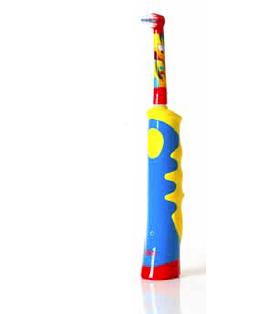

Brushing teeth in children, how do you do that?
Place the toothbrush straight on the teeth. Brush gently using short horizontal strokes. In this way you brush away the harmful dental plaque. If you keep a fixed order, you teach your child to brush systematically. This way there is less chance that you will miss spots. Always brush the edge of the gums. Start at the back of the molars and move through the teeth to the molars on the other side. Take your time. The same applies to brushing with an electric brush. You just don't have to make any brushing movements yourself. Slide the brush slowly over the teeth. Also brush after if your child uses an electric toothbrush.
Brush in a fixed order according to the 3 B's: Binside, Bout side and Boven side.
Brush the teeth in the lower jaw first
Then brush the teeth and molars in the upper jaw
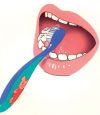
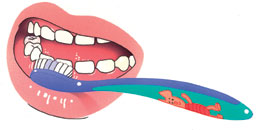
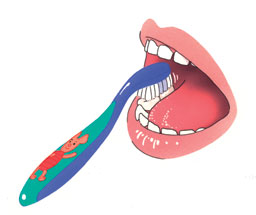
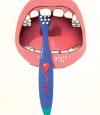
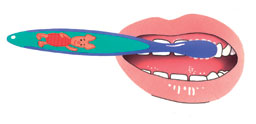
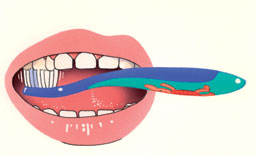
Breakthrough permanent choose
In a child between the ages of 5 and 6, the permanent molars erupt. These first permanent molars break through behind the last milk molars, making it easy for them to go unnoticed. They are also not automatically polished. It is therefore important to brush across the dental arch.
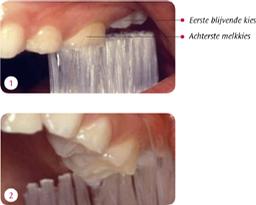
What is the correct brushing position when brushing children?
Make sure you have a good view in the mouth and that there is sufficient support for your child's head when you brush (after). Try out which brushing position is most comfortable for you. For example, you can also take small children on your lap or, for example, brush lying on the changing mat or bed.
Stand diagonally behind your child. If you support the chin with your hand, the head rests against your upper body. Bend over your child a little so you can see where you are brushing.
Or
Stand in front of your child and let him rest his head against the wall, for example. Support the chin with one hand while you brush with the other. This way you can clearly see where you are brushing
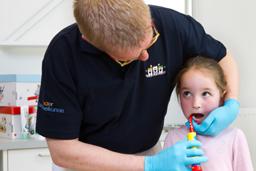
Brushing tips when brushing with children
- Use a (toddler) toothbrush with a small brush head and soft bristles. Don't press too hard.
- Use fluoride (toddler) toothpaste.
- Make brushing teeth fun. While brushing you can tell a story, sing a song, count or turn on music. Various cleaning songs can be found (on-line). Choose something that takes 2 minutes!
- Make brushing your teeth more attractive. For example, let your child choose a toothbrush himself or let him put the toothpaste on the brush himself.
- Make sure that you do not hurt your children while brushing. For example, the lip band under the upper lip and the part of the jaw at the back of the mouth are very sensitive.
- During the eruption of teeth and when changing, there are sensitive spots in the child's mouth. Be careful, but keep brushing.
- With dental plaque detectors you can check whether the teeth have been brushed properly. They are for sale at the drugstore.
- In a child between the ages of 5 and 6, the permanent molars erupt. These first permanent molars break through behind the last milk molars, making it easy for them to go unnoticed. They are also not automatically polished. It is therefore important to brush across the dental arch.
Set a good example yourself. Brush for 2 minutes twice a day.
